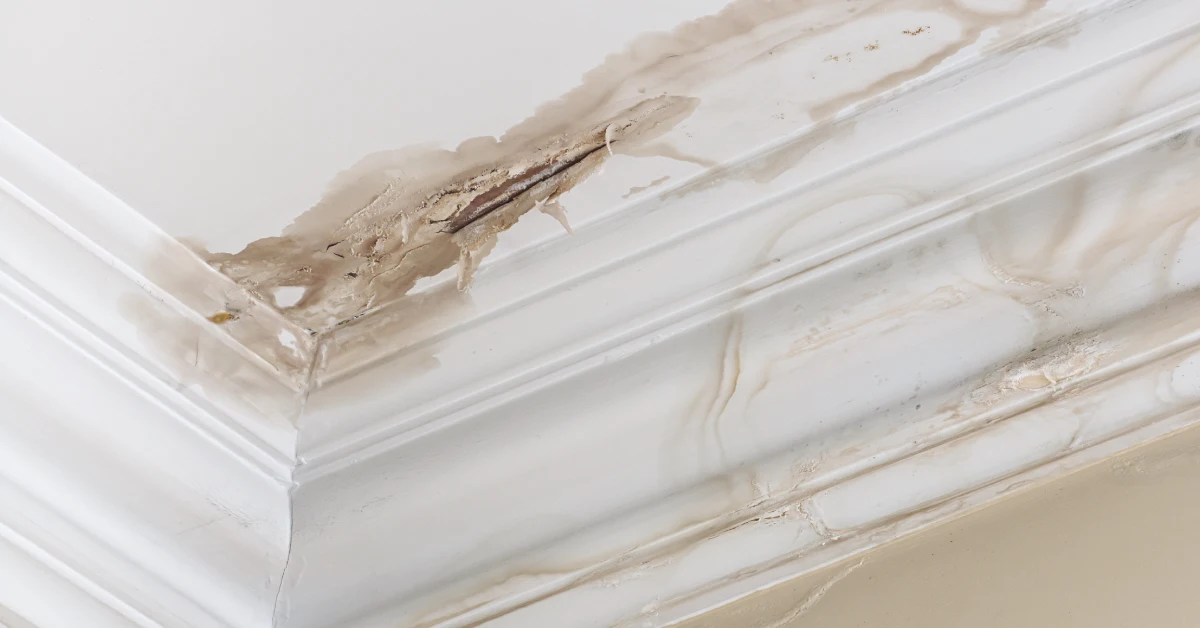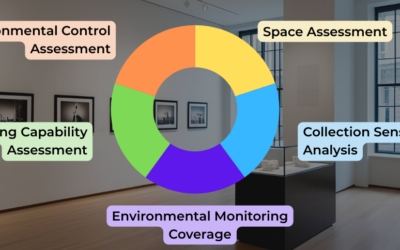The term “art conservator” may not be the most appropriate umbrella term for collections care professionals who focus on the treatment and preservation of cultural heritage. Certainly, a conservator specialized in archaeological metals or natural history specimens would be hard-pressed to call themselves “art conservators”, so who are we including in this particular article?
For the general purpose of this article, we will consider art conservators those who focus on the material fine arts: architecture, paintings, works on paper, and sculpture.
Due to the nature of their work intervening and treating objects (and buildings), art conservators are in a unique position to inform decisions related to disaster preparedness and recovery. The scientific knowledge they hold about the component materials of the objects they treat are key to understanding how we can protect and save artworks from natural or man-made disasters, such as fires, floods, earthquakes, hurricanes, vandalism, or accidents. Furthermore, they are likely to be the people who have looked at your collections in the most detail, knowing the ins and outs of its vulnerabilities and particularities.
As such, it’s important for any collections care professional to keep track of the available expertise and experiences of the staff in the institution so that their valuable input can be included in any disaster preparedness and recovery planning. Focusing on the strengths of each member of the staff will help you maximize the impact of your response in the face of emergencies and salvage operations.
So how can your art conservators help you before, during, and after a disaster? Let’s highlight some of the key responsibilities held by art conservators in disaster preparedness and recovery, as well as some resources and tools they need to effectively respond to emergencies.
Risk assessment and emergency planning
You may task your art conservators with identifying potential hazards and establishing emergency plans to minimize damage to collections in the event of a disaster. As they will be in contact with your collections on a day-to-day basis, they can collaborate with your facilities and care of collections staff to conduct risk assessments and evaluate the likelihood of various threats and their potential impact on your collections. A great resource to start with risk assessment in cultural heritage institutions is The ABC Method: a risk management approach to the preservation of cultural heritage, by Stefan Michalski and José Luiz Pedersoli Jr., and published by ICCROM (International Centre for the Study of the Preservation and Restoration of Cultural Property).
Once risks have been identified, art conservators may help develop and write emergency plans that outline procedures for responding to disasters, including evacuation, salvage, and recovery operations. If you are in need of resources, The American Institute for Conservation (AIC) offers guidelines on developing an emergency plan, as well as resources for disaster response and recovery, through their National Heritage Responders.
Make sure you ask your conservators on staff to talk about triage during your emergency response planning and training. This will help everyone make better decisions when evaluating the extent of damage to artworks after a disaster.
Some important things to include in risk assessments and emergency planning are:
- Make sure inventories and documentation for collections is in order. This includes good quality photographs, condition reports, provenance, value and location information. Don’t forget a lot of this information is confidential and must be properly protected from cybersecurity threats.
- Try to outline the roles and responsibilities of staff, volunteers, and external partners in case of a disaster. Remember that in case of a disaster, not all the people in your plan will be physically present or emotionally prepared, so your plan must take this into account.
- Preparing emergency kits that contain essential supplies and equipment for disaster response. There are no hard rules about what must be present in such kits or what kind of container you need to have as all institutions are different and have varying needs, but here are some resources developed by Curae Collections Care to help guide you.
- Practice and training are essential. Try your best to conduct regular or periodical training and drills so the staff is familiarized with the emergency plan and its procedures.
- I would add here that during emergencies not all objects can be saved at the same time and with the same approaches, for that reason prioritizing is important. To achieve this ensure that conservators are involved in significance assessment of the collection and have lists of the most valuable objects and its location. A salvage priority list like this one created by the Museum Development South West Programme in the UK can be used. Understanding collections, buildings and spaces where objects are exhibited and stored is key to any different management activities, and it comes handy when talking about emergency preparedness.
Preventive conservation measures
Preventive conservation is a key aspect of disaster preparedness, as it focuses on mitigating potential damage to collections before a disaster occurs. While there are conservators specialized in preventive conservation (like our Director of Customer Success, Melissa King) all trained conservators will have a working knowledge of measures related to proper storage, environmental monitoring, and pest management to prevent or minimize the risk of damage. If you are interested in learning more about resources for preventive conservation, check out our other article.
Don’t forget that your art conservators will have experience thinking about protecting artworks during movements in the event of loans or new exhibitions, so make sure you ask them about how best to protect collections in the event of disasters where physical forces are involved (for example, earthquakes).
Together with your teams of architects, engineers or other facilities specialists, your conservators may contribute to discussions about fire suppression systems, improving earthquake resistance, and implementing flood protection measures.
The Getty Conservation Institute’s free PDF download Building an Emergency Plan: A Guide for Museums and Other Cultural Institutions offers practical advice on facility design and construction for disaster resilience in case you need a reference.
Disaster response and salvage operations
When a disaster strikes, art conservators can be called upon to lead or participate in salvage operations to recover and stabilize damaged artwork. They will be knowledgeable about the specific needs and vulnerabilities of various materials as well as the appropriate techniques for handling and stabilizing them after different types of accidents and disasters.
Art conservators might also collaborate with first responders and local authorities during emergencies, providing guidance on the safe handling and transport of cultural objects. Ideally, you will have had a previous relationship with your first responders regarding this aspect. Your conservators will probably be happy to provide these potential future allies with object handling training through your institution.
During salvage operations, conservators will be able to help and direct triage work and prioritize artworks based on their significance, value, condition and/or urgency of treatment.
Post-disaster conservation and recovery
Following a disaster, your art conservators will be able to assess the extent of damage to the collection and determine the appropriate conservation treatments. They may work closely with other specialists, such as paper conservators or object conservators, to carry out treatments aimed at stabilizing and preserving the affected objects. If you don’t have a conservator for every material, the Canadian Conservation Institute (CCI) offers a series of technical bulletins on conservation treatments for various materials, which can be a valuable resource for conservators working in disaster recovery.
Conservators may also play a key role in the documentation of damaged objects, helping your registrars ensure that information about their condition, treatment, and provenance is accurately recorded and maintained. The International Council on Archives (ICA)’s Guidelines on Disaster Prevention and Control in Archives offers practical advice on post-disaster documentation and record-keeping.
Finally, conservators will be the ones in charge of treatment plans and direct object interventions after a disaster, so it’s a good idea to make sure they are involved in the process from the beginning as the information gleaned from the disaster may influence treatment decisions, choices for materials used in restorations, and how to organize and condition the space where objects are going to be located temporarily
Concluding thoughts around art conservators
As you can see, art conservators (and other conservators in general) are key players in disaster preparedness and recovery. By making sure you involve them in risk assessment, ask for their input regarding preventive conservation measures, and give them clear responsibilities during and after disaster response, you will be able to harness their knowledge and skills for the benefit of your collections.
If you have any questions about environmental monitoring, integrated pest management, or just want to talk about preventative conservation, please reach out to us! Don’t forget to check out our blog or join our community of collections care professionals where you can discuss hot topics, connect with other conservators or even take a course to get familiar with the Conserv





